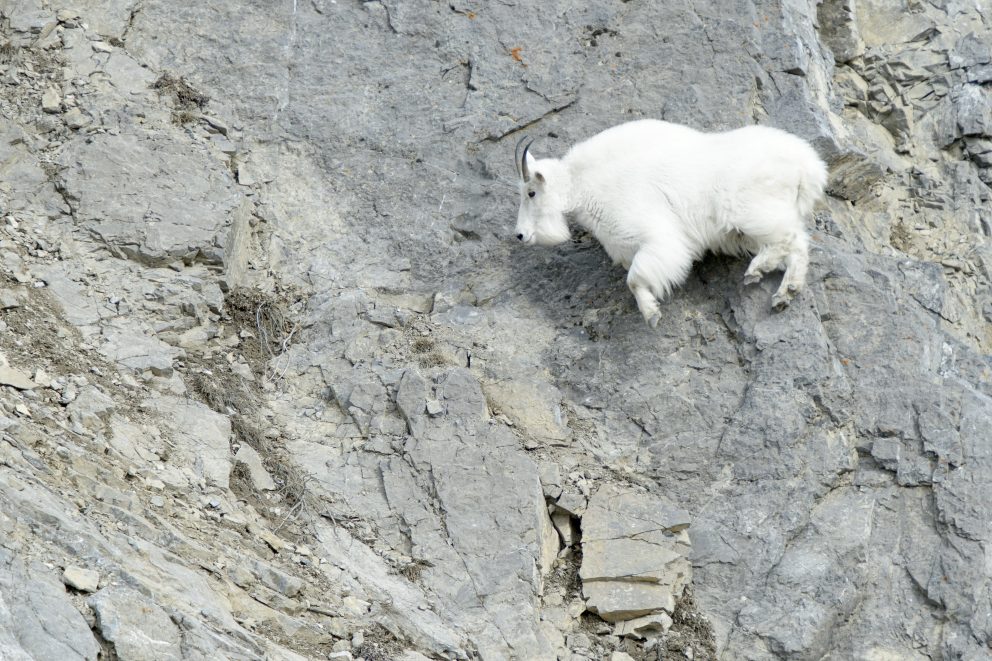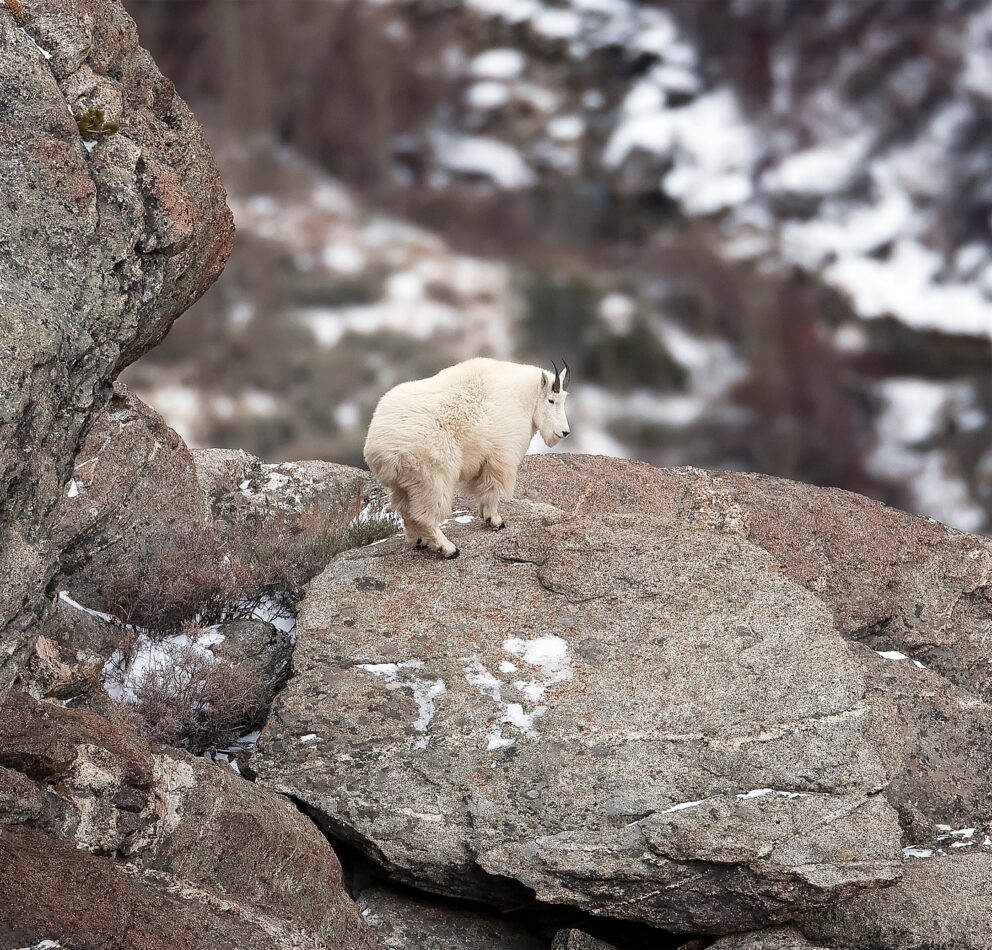- SCIENTIFIC NAME
- Oreamnos americanus
- CLASSIFICATION
- Mammal
- LIFE SPAN
- 12-18 Years
- SIZE
- 54-60” | 200-250lbs
- STATE CONSERVATION STATUS
-
- State Protected
- FEDERAL CONSERVATION STATUS
- Least Concern
- GAME STATUS
- Game
- GAME TYPE
- Big Game
- Washoe
- Humboldt
- Pershing
- Churchill
- Mineral
- Lyon
- Douglas
- Carson City
- Storey
- Elko
- Lander
- Eureka
- White Pine
- Esmeralda
- Nye
- Lincoln
- Clark
Habitat & Range
Mountain Goats were first introduced into the Ruby Mountains in the mid-1960’s with the release of 12 goats from Washington state. In Nevada, they can be found only in the Ruby Mountains and East Humboldt range. Mountain Goats prefer steep rocky cliffs, projecting pinnacles, ledges, and talus slides.
- Alpine and Tundra
- Caves
- Cliffs and Canyons
Threats
- Disease
- Habitat Degradation
Natural History
Mountain Goats usually consume their food depending on what is available to them at the time. This herbivore eats plants, grasses, mosses, and other alpine vegetation. In the summer they will eat sedges and grasses and in the winter their diet consists of coniferous trees and leaves. They drink water and eat snow to stay hydrated. Groups of Mountain Goats are referred to as bands. Adult males, called “billies,” are larger than the “nannies,” or adult females. They are polygamous animals, with the mating, or “rut,” season occurring from November to January. The gestation period is about 175 to 180 days. Birth generally takes place in late May and early June with one and sometimes two “kids,” or young. Females (nannies) will often form large groups while males (billies) will often remain solitary or with much smaller groups. Their hooves act like suction cups on steep rocky terrain and their young, called “kids,” can walk and jump about 10 minutes after birth. They can experience predation from bears, mountain lions, wolves, golden eagles, and humans.
Fun Facts














